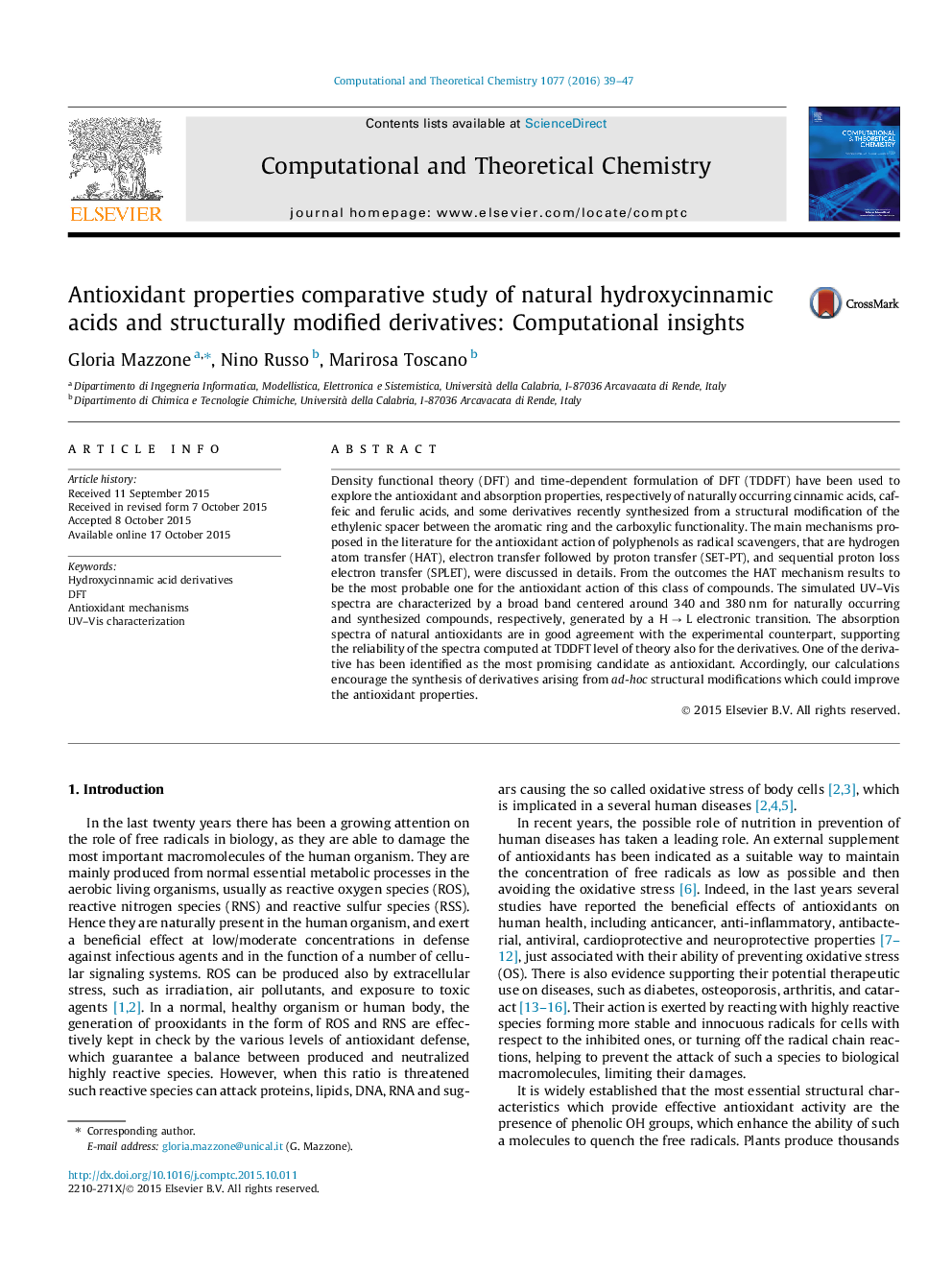| Article ID | Journal | Published Year | Pages | File Type |
|---|---|---|---|---|
| 5392952 | Computational and Theoretical Chemistry | 2016 | 9 Pages |
â¢Antioxidant properties of cinnamic acids and some derivatives.â¢Descriptors of the main mechanisms of action as primary indicators of antioxidant activity.â¢Hydrogen atom transfer mechanism is preferred by this class of compounds.â¢UV-Vis absorption spectra show a broad band in the region between 340 and 380 nm.
Density functional theory (DFT) and time-dependent formulation of DFT (TDDFT) have been used to explore the antioxidant and absorption properties, respectively of naturally occurring cinnamic acids, caffeic and ferulic acids, and some derivatives recently synthesized from a structural modification of the ethylenic spacer between the aromatic ring and the carboxylic functionality. The main mechanisms proposed in the literature for the antioxidant action of polyphenols as radical scavengers, that are hydrogen atom transfer (HAT), electron transfer followed by proton transfer (SET-PT), and sequential proton loss electron transfer (SPLET), were discussed in details. From the outcomes the HAT mechanism results to be the most probable one for the antioxidant action of this class of compounds. The simulated UV-Vis spectra are characterized by a broad band centered around 340 and 380 nm for naturally occurring and synthesized compounds, respectively, generated by a H â L electronic transition. The absorption spectra of natural antioxidants are in good agreement with the experimental counterpart, supporting the reliability of the spectra computed at TDDFT level of theory also for the derivatives. One of the derivative has been identified as the most promising candidate as antioxidant. Accordingly, our calculations encourage the synthesis of derivatives arising from ad-hoc structural modifications which could improve the antioxidant properties.
Graphical abstractDownload high-res image (89KB)Download full-size image
